- Home Energy Saving Scheme
- Posted
Heated agrément
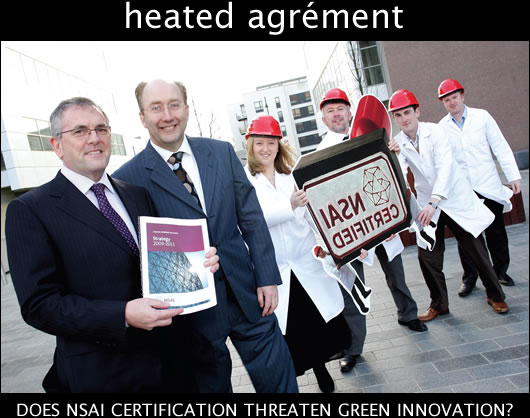
Earlier this summer SEI announced that, from December, external wall insulation systems must have Irish Agrément certification to be eligible for support under the Home Energy Saving scheme. But many in the green building sector are critical of the decision, and some are questioning the value and purpose of Agrément. Lenny Antonelli reports.
Sustainable Energy Ireland created a small stir in the green building sector in May with an announcement that, from early June, all external wall insulation (EWI) installed under the Home Energy Saving scheme would have to be certified by the Irish Agrément Board. The IAB, a division of the National Standards Authority of Ireland, certifies construction products without a long history of use in Ireland, and for which there is no national standard. Previously EWI products with Agrément "or equivalent" certification - such as European Technical Approval - were eligible. ETA is an EU fitness-for-purpose declaration for construction products.
Following discontent at the short notice given regarding the changing requirements, SEI pushed back their introduction until 1 August. While this delay was welcomed, there remains some annoyance that only Agrément-certified products will be supported by the scheme. Various industry figures Construct Ireland spoke with queried the value of Agrément certification, and the wisdom of shutting out other forms of approval.
At the time of going to press, only two EWI systems had certs explicitly stating their suitability for refurbishment (Parex Lahabra and Baumit EWIs), though five such systems have Agrément. Building materials specialist Sto also told Construct Ireland they'd received word from that IAB that it does consider their StoTherm EWI system suitable for refurb, though its certificate specifically refers to new build.
In a detailed article in this issue of Construct Ireland (see p76) architect Joseph Little examines the Agrément certificate for Parex Lahabra EWI. He concludes that if the system is installed according to the details outlined in the certificate, the reduction in energy demand and heating bills will not be as significant as expected, and the entire refurbishment may be non-compliant with the thermal bridging requirements for renovation in the building regulations.
Referring to the latest regulations (TGD L 2007), Little says there is ambiguity surrounding the minimum standards for thermal bridging in refurb projects, with one clause advocating compliance with the onerous thermal bridging values set out in Appendix D of the regs, and another stating a mere 15mm of insulation with a lambda value of 0.04W/mK wrapped around the back of lintels, jambs and cills (different elements of a door or window frame) should be generally adequate to obtain compliance in these areas. He calls for the uncertainty to be cleared up in the next revision to part L of the regs.
Little concludes that if Parax Lahabra EWI system is installed according to the details specified in the Agrément certificate, it can meet neither of the clauses. He adds that: "The details shown in the Agrément cert, if applied literally, cause the heat loss (W/K) through junctions of the wall assembly to almost treble." His calculations suggest that a house using the insulation as the cert specifies would suffer from a thermal bridge at the eaves 17 greater than that specified in Appendix D. Little also concludes there would be a marginal risk of condensation to the sill of the house if the EWI is installed as per the cert.
Parex Lahabra EWI is certified by the IAB to "remain effective" in refurbishment projects for at least 30 years if designed, installed and maintained according to its Agrément certificate. The Department of Environment require any new house issued with a floor area compliance certificate - necessary for it to qualify for stamp duty exemption - to have a design life of 60 years given normal maintenance, and the IAB will certify construction products to this length of time. The Department of Environment's 'Quality Housing for Sustainable Communities' guidelines also advise that residential dwellings have a service life of 60 years. The 60 year requirement, and the issuing of Agrément certificates designed to verify that products meet it, has proven somewhat contentious in the green building sector, where many see it as a hinderance to the uptake of innovative green building products.


Seán Balfe of the Irish Agrément Board
Paul Caluwaerts of the European Organisation for Technical Approvals - which co-ordinates the awarding of ETAs - told Construct Ireland that as far as he's aware, the Irish demand for 60 year durability is unique in Europe. The British Board of Agrément does certify construction products to 60 years, but the standard is not required by the state. While setting high standards for durability has obvious merit, key questions must be asked: Will such a rule favour traditional construction products that have a long history of use at the expense of innovative alternatives? And by what method can a product be tested to 60 years anyway?
A guidance paper to the EU's Construction Products Directive describes two main ways of estimating the durability of a product. The first, performance testing, involves subjecting a product to certain conditions - sometimes accelerated to mimic longer term use - to test its durability. The alternative is the "descriptive" method, estimating lifespan based on a product's known history of use. The IAB's Seán Balfe told Construct Ireland that when certifying a product new to Ireland, the IAB will study the history of its use elsewhere and make relevant climatic comparisons with Ireland. Performance testing generally can't test to 60 years, and so a descriptive estimate is the principle way a product could be estimated to have this level of durability. However, EOTA's Paul Caluwaerts pointed out that because the descriptive method relies on there being sufficient prior use, it's irrelevant for innovative products. European Technical Approvals typically state than an EWI product should have a working life of 25 years.
It’s stated on the Agrément Board website that Agrément certification is designed specifically for new building products and processes that don’t yet have a long history of use. How can an Agrément cert with a 60 year design life statement be written for a new product with no history of use, if the only way of estimating its lifespan is on the basis of its known history of use?
The IAB is the Irish body charged with issuing ETAs – as is stated at the top of each Agrément cert – but it has yet to issue one. Paul Caluwaerts told Construct Ireland this was an unusual position for an issuing body. Seán Balfe said the IAB has yet to issue an ETA because CE marking - an EU conformity mark manufacturers can claim after being awarded an ETA - is not mandatory in Ireland. However, because CE marking is mandatory in most EU countries, the lack of ETAs issued in Ireland could nonetheless create the impression that there is no construction product manufacturing here. Balfe said the IAB does advise its clients they can avail of ETAs and CE marking through the organisation, while NSAI aims to "encourage the first Irish ETA (to be) issued by latest Dec 2011" according to its current strategy document ( for 2009-2011). The issuing bodies in other countries in which CE marking isn't mandatory - Sweden, Finland, and Britain - have all issued ETAs.
CE marking may become mandatory as part of new a EU Construction Products Regulation (CPR), which could replace the less-binding Construction Products Directive as early as next year and lay down harmonised EU standards for the marketing of construction products. A clause in the proposed rules states that "CE marking shall be the only marking which attests conformity of the construction product with declared performance. Member states shall not introduce national measures or shall withdraw any references to a conformity marking other than the CE marking." Construct Ireland asked Seán Balfe how this could affect the IAB, and he said he still saw an important role for the organisation in certifying products as installed and demonstrating how they can be used to comply with national building regulations. NSAI's strategy document aims for the "development and clear delineation of (the) role of Agrément, after implementation of the CPR, to continue to play an essential role in staying ahead of change in the construction market."
Balfe emphasised what he sees as the advantages of Agrément over ETAs. "An Irish Agrément certificate offers a statement of compliance with the Irish building regulations," he said. "There are no common building regulations in the EU and there are no moves to do so. A CE marking does not instruct on how a product can be used to comply with regulations." He added that some ETAs do not specify the performance of a product in relation to fire, and stressed that Agrément certifies a product as installed, while saying ETAs offer "no emphasis on installation at all." He said 80 per cent of product failure is down to installation. Paul Caluwaerts agreed that national certification bodies like the IAB can play a role in demonstrating construction products satisfy national regulations, supplementing ETAs, which, he said, demonstrate a more general fitness-for-purpose. “ETA is about the product and its performances, not about the quality of the installation,” Caluwaerts said, adding that SEI could have addressed the requirement for certification of product and installer in a different way. “Another solution could have been to accept all products with national Agrément or equivalent – so also the ones with ETAs – and to additionally impose a certification scheme for installers, which looks to me more in line with the correct implementation of European regulations,” he said.
 A Cavity Insulation Guarantee Agency backed installer pump-fills a wall in the UK
A Cavity Insulation Guarantee Agency backed installer pump-fills a wall in the UK
Agrément certification typically costs from around e17,000 up to e50,000, depending on the product, Seán Balfe told Construct Ireland. He said certification is generally cheaper if a product already has similar approval, such as an ETA or British Agrément. Industry figures Construct Ireland spoke to mentioned costs of around e30,000 to certify EWI products for refurbishment, and e50,000 to certify for new build too. One supplier said he was quoted a price of over e45,000 to convert an ETA to an Agrément cert specifying suitability for both new build and refurb.
In addition to the initial charge, it costs between e750 and e3000 per year to remain certified, depending on the number of products a company has certified. The IAB is also introducing a register of EWI installers, which will be mandatory for contractors seeking work under the Home Energy Saving scheme. Initial applications will cost e3,000, and the charge will be e1,500 each year thereafter.
Certification isn't cheap, and while maintaining high standards can demand time consuming and expensive investigation, manufacturers are right to ask whether they are getting value for money. Speaking to Construct Ireland, some said that making Agrément mandatory - thus forcing suppliers with ETAs to now apply for Agrément - could raise the price of EWI and negate the effect of government grants.
"There is a direct cost to the consumer," Patrick Durkan of renovators Durkan EcoFix said. "It will make the cost of external insulation more expensive and ultimately reduce the return on investment to the customer and also to the government by way of diminished return on the grants available."
He continued: "This is a barrier to entry for building material suppliers, the Irish market is small and many of the suppliers we have spoken to are refusing to invest the money and time to achieve the cert. This will diminish competition in the market and lead to higher prices for the consumer."
Joseph Little also expresses concern for the impact on contractors. "In these straitened times," he writes, "these kind of changes could either force suppliers out of business, or to withdraw from our small island market, and will certainly make products in the reduced market more expensive for consumers."
The IAB does not conduct testing of its own when certifying a product - Seán Balfe told Construct Ireland that when a manufacturer applies for certiifcation, the IAB will request test data that has been independently verified. "There will be a battery of tests that we'd want to see performed. We will look for some of them to be done in an independent test house," he said, adding that at other times the IAB is happy to accept manufacturer data the IAB has itself verified. The IAB conducts annual audits of certified manufacturers, he said, and this can include visits to projects on which a product has been installed. Balfe stressed the importance of having independent certification to verify manufacturers' performance claims.
He said the IAB employs three chartered engineers to assess building systems, and also contracts work to external assessors. The final dececision on approval rests with the 'board' itself - a committee that includes representatives of the Royal Institute of Architects of Ireland, the Association of Consulting Engineers of Ireland, the Construction Industry Federation, the Irish Home Builders Association, IBEC and Enterprise Ireland. NSAI Agrément has set a target of increasing by 50 per cent the number of certs it issues in areas such as insulation, heating and waste management products by 2012. It has also taken more interest in the sustainable sector recently, and is soon to introduce an energy rating scheme for windows.
Agrément certification, as the NSAI website states, "provide(s) the board's opinion of the fitness for specified purposes of materials, products, systems and techniques, taking into account the context in which they are to be used." However, many of the industry figures Construct Ireland spoke to questioned the value of Agrément certification considering it offers no technical guarantees or legal protection to consumers.
"It must be noted that Agrément provides no real quality assurances for the customer which is paramount," said Patrick Durkan, a concern heard from various figures in the industry. Construct Ireland spoke to former NSAI director of standards Ewing Paterson - both he and Seán Balfe said Agrément is designed to be a quality mark rather than than a guarantee of performance. "It's never been tested in court to see if offers any type of guarantee," Balfe said. "The only way we'd know is if we were sued and told it does. Our opinion would be that it doesn't."
Construct Ireland editor Jeff Colley has floated an alternative proposal to maintain standards under the Home Energy Saving scheme - that contractors would ensure their products are either IAB or ETA certified, but also covered by latent defect insurance. This would add only small sums to the cost of each job, but would provide financial cover for consumers in the event of product failure, defective workmanship or defective design. The insurers Colley has spoken to have emphasized that they would demand high standards in terms of product certification and installer training to ensure a good quality of workmanship and thereby minimise the risk of a claim.

Construct Ireland’s Lenny Antonelli interviewing Viking House’s Seamus O’Loughlin
Construct Ireland asked SEI why only Agrément-certified EWI products will be supported under the Home Energy Saving scheme. In an emailed reply, SEI's Majella Kelleher wrote: "The approach taken to the design of any support scheme which attracts public funds is to ensure that it is anchored to solid and nationally specific standards where applicable. In the case of external wall insulation there is such a standard in place and NSAI Agrément certification is viewed as the best and most appropriate starting point. This certification also certifies the installer of the product, different to other schemes, which is deemed important given that a key focus of the HESS is on the quality of the installer."
She added: "A key emphasis for the HES scheme is on the fitness of the contractor and not solely the product. NSAI Agrément certification offers more security in this regard with regular follow up quality inspections to support it." Agrément certification is now mandatory for both EWI and cavity wall insulation under the Home Energy Saving scheme. "Equivalent" certification is still accepted for dry lining, a much more delicate process with greater risk of condensation and mould problems. Speaking to Construct Ireland about SEI's insistence on Agrément certification, Seamus O'Loughlin of green builders Viking House wondered: "How many products with an ETA have been found to have failed in Ireland?"
When asked about SEI's views on latent defect insurance, Kelleher said that while Agrément sets a standard for contractors and products coming on to the market, insurance is useful in the event of faulty products or workmanship. She wrote: "Certification relates to specifying a qualification standard...and is applied to contractors ahead of their operating in the market to ensure, as far is possible, a high standard of work. The bond style insurance relates to remedy in instances where poor work is done. In this sense such latent defect insurances would be supplementary to any pre-qualification for eligibility rather than as an alternative to." However mandatory insurance could also help to maintain high overall standards, as it would clearly be in insurers financial interest to prevent faulty products or poor quality installers entering the market.
SEI's Brian Motherway told Construct Ireland a few months previously the organisation would "very much welcome the development of new tailored insurance products, especially of a bond type that offers homeowner longer and more independent assurance. SEI would be happy to recommend that HES contractors avail of such products and once several appropriate and affordable products become available, would consider ultimately making such products mandatory for the scheme."
One interesting model that could be applied here is that of the UK's Cavity Insulation Guarantee Agency, which independently guarantees cavity wall insulation fitted by registered installers in the UK and Channel Islands for 25 years, and will pay up to £10,000 in compensation to the homeowner in the event of an insulation product or workmanship being faulty.
Clearly, high standards are key to the success of programmes like the Home Energy Saving scheme. And certification is an important part of keeping standards high - it can provide independent verification of a product's performance, and provide clear information on how and where it should be used. But consumers, and those in the industry, are right to ask key questions about Agrément: Does it provide value for money? Is it right for Agrément to be emphasised over alternative approaches? And what value does it offer consumers and manufacturers? These questions should be debated openly by all concerned.
- Articles
- home energy saving scheme
- Heated agrément
- NSAI
- National Standards Authority of Ireland
- sustainable energy ireland
- NSAI AGRÉMENT
Related items
-
 Kilsaran gets NSAI cert for EWI to steel frame
Kilsaran gets NSAI cert for EWI to steel frame -
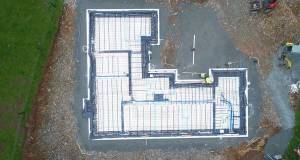 KORE gets NSAI cert for insulated foundation
KORE gets NSAI cert for insulated foundation -
 Passive Sills gets Agrément cert
Passive Sills gets Agrément cert -
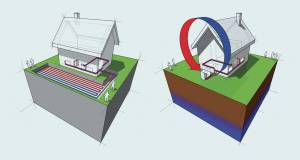 Heat pump grants - what you need to know
Heat pump grants - what you need to know -
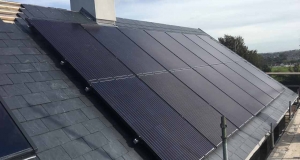 Passive House Systems gets first ever NSAI Agrement cert for solar PV
Passive House Systems gets first ever NSAI Agrement cert for solar PV -
 Amvic Ireland ICF gets updated Agrément cert
Amvic Ireland ICF gets updated Agrément cert -
 Codema launch energy saving kits in Dublin libraries
Codema launch energy saving kits in Dublin libraries -
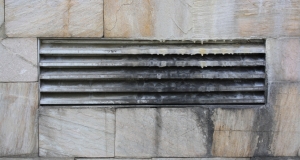 Flaw in NSAI retrofit code raises ventilation concerns
Flaw in NSAI retrofit code raises ventilation concerns -
 SEAI brings Energy Show back to RDS on 5-6 April
SEAI brings Energy Show back to RDS on 5-6 April -
 Solar Electric Ireland wins ‘Product of the Show’ at Energy Awards
Solar Electric Ireland wins ‘Product of the Show’ at Energy Awards -
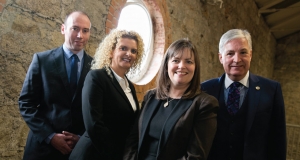 Kore leads way with integrated ISO certificates
Kore leads way with integrated ISO certificates -
Opinion

